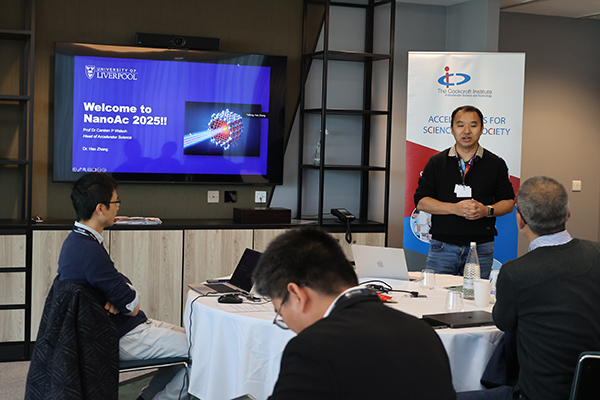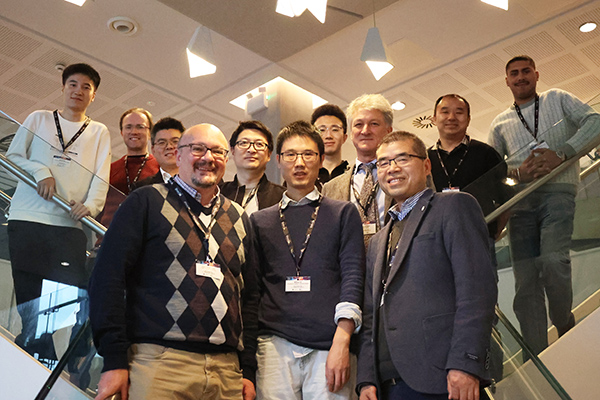Great energy and ideas at the 3rd NanoAc Workshop in Liverpool

The University of Liverpool’s QUASAR Group, based at the Cockcroft Institute, has hosted the 3rd NanoAc Workshop on Applications of Nanostructures in the Field of Accelerator Physics on 6–7 November 2025 in Liverpool, UK.
Thirty-five experts from accelerator and plasma physics convened, both online and in person, to explore how nanostructures and nanomaterials could shape the future of high-field acceleration and advanced radiation sources.
The program consisted of 17 talks covering plasma physics, accelerator physics, solid-state physics, materials science, computer science, engineering, industrial nanotechnology, spectroscopy and more.
This multidisciplinary approach is essential for addressing the complex challenges and opportunities that nanostructured materials present in accelerator science.
QUASAR member Dr Bifeng Lei presented the group’s recent work on the interaction between high-intensity beams and solid-surface plasmas in the relativistic regime. By developing the new high-intensity beam-driven surface-plasmon excitation mechanisms, we have proposed and begun to realise a solid plasma-based wakefield scheme for particle acceleration and coherent radiation generation. These wakefields, driven by either photon or charged particle beam, can reach amplitudes of up to several hundred TV/m, opening possibilities for applications that were previously out of reach. This work marks a new direction in ultra-high-gradient acceleration and radiation source development.
Dr Bifeng Lei presented the QUASAR Group’s recent work on the interaction between high-intensity beams and solid-surface plasmas in the relativistic regime.
Several presentations stood out, including Prof Sultan Dabagov’s (INFN-LNF) comprehensive overview of current research on beam channelling in accelerator and radiation physics, and Dr Daniel Seipt’s (Helmholtz Institute Jena) presentation of an innovative approach to measuring the emittance of laser-accelerated electron beams. In addition, Prof Alexandre Bonatto (UFCSPA) introduced a new strategy for optimising parameters in CNT-based experiments using Bayesian optimisation.
A special highlight of the workshop was a seminar by Prof Toshiki Tajima, who holds the Norman Rostoker Chair in Physics at UC Irvine. He discussed laser-wakefield electron sources and their potential for future endoscopic applications.

Several delegates attended the workshop in person.
The workshop sparked lively cross-disciplinary discussions and new collaborations. It is showing how fast the nanoAc community is growing.
Thank you to everyone who contributed to this inspiring meeting. We’re excited to see what 2026 brings!
More information can be found on the event homepage https://indico.ph.liv.ac.uk/event/2027/
